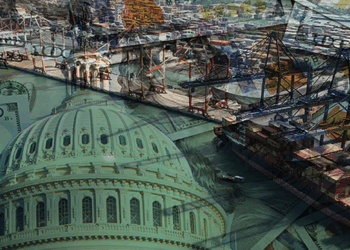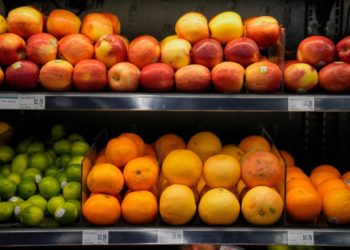Members of the New York City Council advanced two of the biggest neighborhood development plans in decades on Tuesday, promising to bring 26,500 additional homes to areas across Queens as the city contends with its worst housing crisis in decades.
The Council voted to approve a plan that could bring 11,800 new homes across 230 blocks of Jamaica, which is near the eastern edge of the borough. Earlier in the day, the Council’s land use committee voted in favor of a plan that would make way for 14,700 apartments over 54 blocks of Long Island City, just across the East River from Midtown Manhattan.
Based on how many housing units would be created, each plan is among the biggest to come before the City Council in a quarter century. The plans come during a mayoral election dominated by housing issues, and just months after the city approved an update to the zoning code, known as City of Yes, that is expected to produce 80,000 new homes across the city.
“I believe that people will look to these collective actions as the moment where we really started to turn the tide on the city’s housing crisis,” said Dan Garodnick, the director of the Planning Department and chair of the Planning Commission, which helped shape the plans.
New York City is dealing with its worst housing shortage since the 1960s, resulting in some of the highest rents ever.
Plans that target neighborhoods, specifically by changing the zoning code to encourage more residential and commercial development, are an important way the city shapes and encourages growth. In addition to City of Yes, the city has approved neighborhood plans aimed at Midtown Manhattan, the east Bronx, SoHo in Manhattan and Gowanus in Brooklyn.
But the plans advanced on Wednesday took on a heightened significance because of the election. Both leading mayoral candidates, Assemblyman Zohran Mamdani and former Gov. Andrew Cuomo, have pledged to build hundreds of thousands of new homes if elected.
The area targeted by the Long Island City plan overlaps with Mr. Mamdani’s Assembly district. It also includes the site where left-leaning politicians, including Mr. Mamdani, successfully fought against a plan to build an Amazon headquarters in 2018.
This year’s plan, which is accompanied by $2 billion in investments in schools, parks and more, presents a stark contrast to the Amazon proposal, which included hefty public subsidies for Amazon itself, one of the biggest and richest companies in the world.
But its advancement on Wednesday signals how leaders on the political left have warmed toward development. Most of the new housing units would rent at market rates, and all would be built by private developers. And because Mr. Mamdani has spoken warmly about the rezoning, it could foreshadow the way in which he would approach housing should he win the mayor’s race.
Other parts of the neighborhood have been among the highest-growth parts of the city.
“New York City is currently in a housing crisis, and Long Island City continues to lead in the production of new housing,” said Council Member Julie Won, who represents Long Island City,
The votes placed a particular focus on several contentious ballot measures that aim to speed up and simplify how the city approves housing development.
Those measures would diminish the sway individual council members have over housing in their districts by targeting the unofficial veto they hold over new development, a practice also known as member deference.
The City Council, which opposes the ballot measures, said limiting member deference would remove members’ ability to use the threat of a veto to negotiate better deals for their communities.
Speaker Adrienne Adams, who represents parts of Jamaica, and Ms. Won both pointedly suggested on Wednesday they would not have been able to negotiate the newly advanced deals without member deference.
The Jamaica plan includes $413 million in city investments to improve sewers, parks and roads, among other things. The Long Island City plan, which is expected to be approved at the next meeting of the City Council following the committee vote, will be accompanied by $2 billion in investments, city officials said.
Large percentages of the homes in both plans would be intended for people of lower or moderate incomes.
At the meeting on Wednesday, Ms. Won said that if voters approved the proposals limiting Council members’ influence, it would “make it impossible for me to ever negotiate on behalf of my community ever again to this level.”
The City Council on Wednesday also approved a plan to transform a huge armory in the northwest Bronx into an event venue, park space and affordable housing, among other components of a plan.
Mayor Eric Adams said in a statement that the three plans would “help build thousands of new homes, create thousands of new jobs, and open up vibrant new spaces for New Yorkers to enjoy.”
Mihir Zaveri covers housing in the New York City region for The Times.
The post New York City Council Advances Plans to Build 26,500 Homes appeared first on New York Times.




